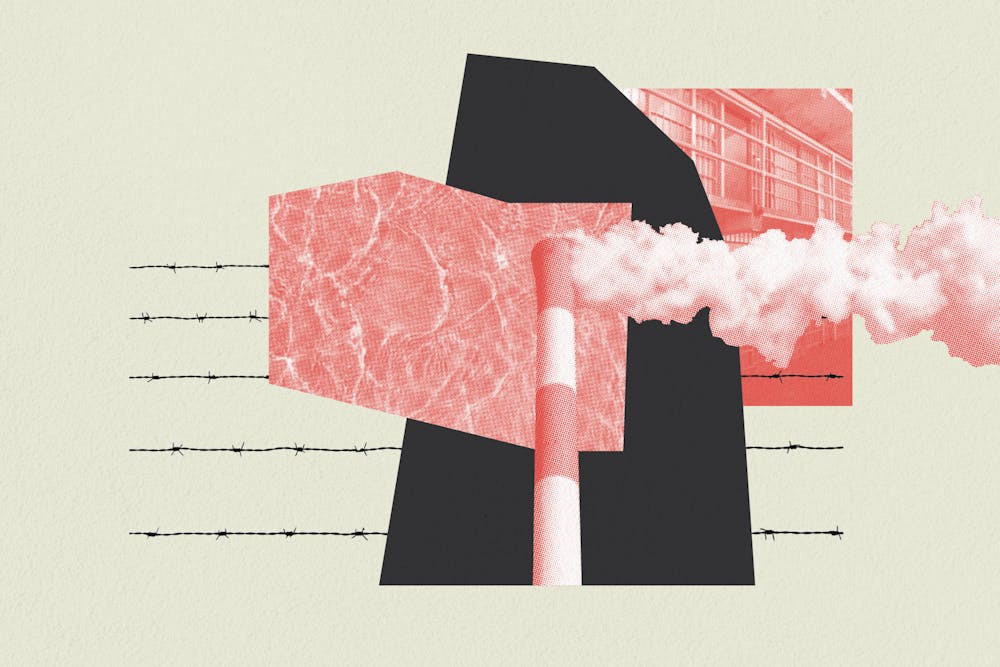This year, we felt and witnessed the disastrous effects of the climate crisis. Droughts and wildfires have ravaged California, forcing tens of thousands of people to flee their homes. Just recently, Hurricane Ida devastated multiple areas across Louisiana, New York, New Jersey, and Pennsylvania, triggering flash floods that have killed dozens of residents in the Northeast.
The recent wildfires and hurricanes not only point to the harsh reality of our climate, but also to our dangerous lack of national preparedness. Many cities do not have the proper infrastructure to sustain these environmental disasters, and despite long–standing warnings, lawmakers have neglected to maintain essentials like electrical lines and stormwater systems that could have reduced the impact of extreme weather events. Hundreds of residents whose homes were destroyed or severely damaged by the recent floods still await some form of relief, and many areas are in critical need of recovery.

In these cases of environmental disaster, many states have relied on a population that is often rendered invisible: the incarcerated.
In Florida, hundreds of unpaid prisoners were dispatched to pick up tree limbs and other hurricane debris in the aftermath of Hurricane Irma. Incarcerated firefighters in California have been paid as little as $2–$5 a day to contain wildfires, and as of May of this year, 1,600 inmates work in the state’s “conservation camps”— facilities uniquely tasked with aiding the government's environmental disaster response. The exploitation of incarcerated populations as cheap labor, however, is unfortunately not new. In fact, Florida’s inmate work crews have existed since the state opened their first penitentiary in 1868. The unpaid labor of prisoners was used to offset the costs of the prison facility itself, and vagrancy laws were passed to supply the state with a constant stream of prisoners—and thus laborers.

Despite this history, and the extremely low wages that these workers are paid in the face of dangerous and physically taxing situations, governments have described these programs as positive and beneficial for inmates. The California Department of Corrections and Rehabilitation, for instance, posits their conservation camps as an “opportunity [for able–bodied inmates] to work on meaningful projects throughout the state.” What’s less acknowledged in America’s reliance on prison labor is how inmates are frequently neglected when affected by climate catastrophes, and are also disproportionately vulnerable to environmental dangers.
In anticipation of Hurricane Harvey, hundreds of incarcerated workers in Texas were made to fill sandbags that were designed to prevent intense flood waters. Disturbingly, not only were the inmates unpaid, but they were left behind in the flooded facilities of the prison in inhumane conditions. Accounts from the National Lawyers Guild report of “cells flooded knee–high with water contaminated by urine and feces, as well as the inability to flush toilets, take showers, or change clothes for two weeks.” Prisoners were also left without adequate access to water or food. Similar conditions occurred in Louisiana after Hurricane Katrina, in Texas after Hurricane Ike, and again, and after the recent Hurricane Ida in Louisiana.
When governments are in need of cheap labor, inmates are considered essential; when prisoners' health and safety are at stake, they are seen as disposable.

Furthermore, it cannot be ignored how the “modern–day slavery” of prison labor is racialized. Journalist Nadra Kareem Nittle outlines how the “1865 ratification of the 13th Amendment prohibited slavery and servitude in all circumstances ‘except as a punishment for crime’ … [resulting] in Southern states passing the black codes to criminalize activities that would make it easy to imprison African Americans, and effectively force them into servitude once more.” Everything from loitering to joblessness was used to criminalize Black communities, ultimately fueling the cycle of imprisonment and exploited labor in the prison system that we see today. As law professor Michele Goodwin argues, the reliance on prison labor is so widely normalized because it is “Black and brown faces [that are] associated with it.”
The intersection of the prison industrial complex and the climate crisis underscores the desperate need for action. The rapid escalation of climate change requires immediate federal intervention to not only curb further damage to our planet, but to provide relief and aid to those currently being affected by environmental catastrophes—without having to rely on GoFundMes to survive and seek refuge. The continued exploitation of inmates, and the way they are rendered expendable, adds to the rising call for abolition and an end to the prison system that has thrived off of a legacy of oppression.







